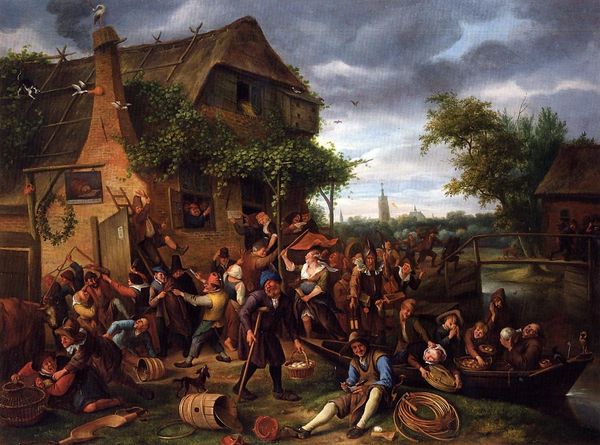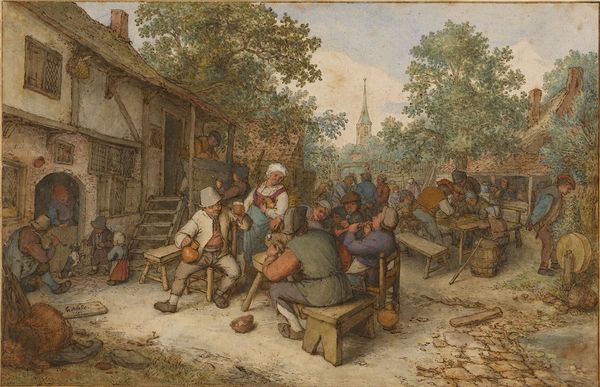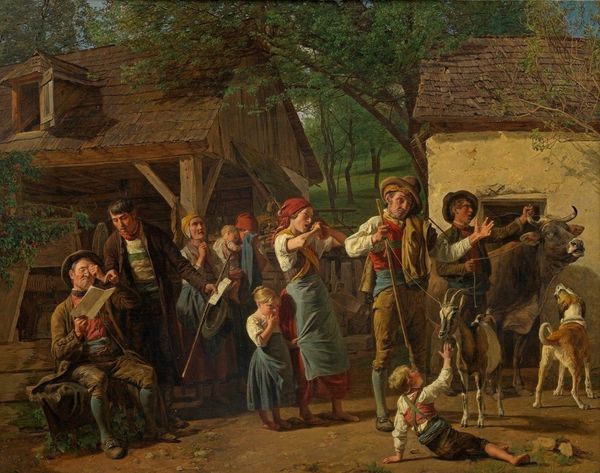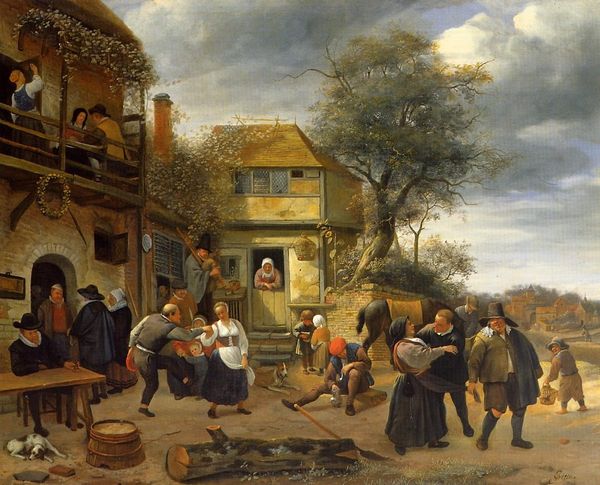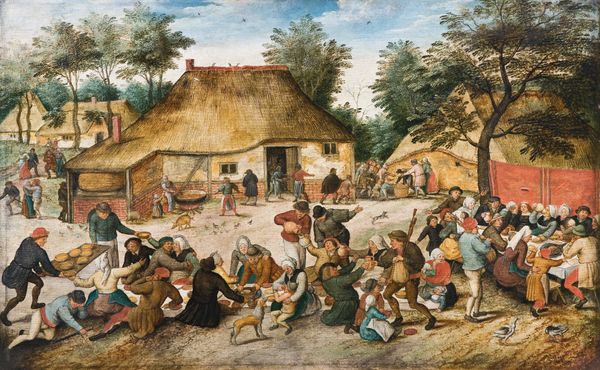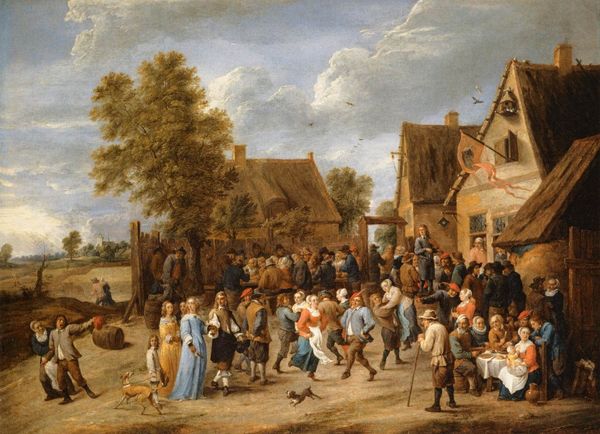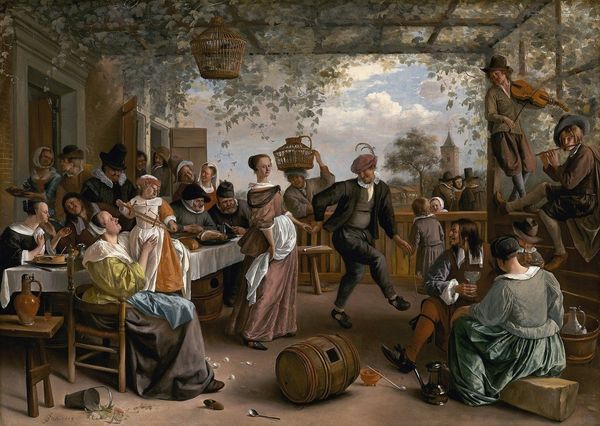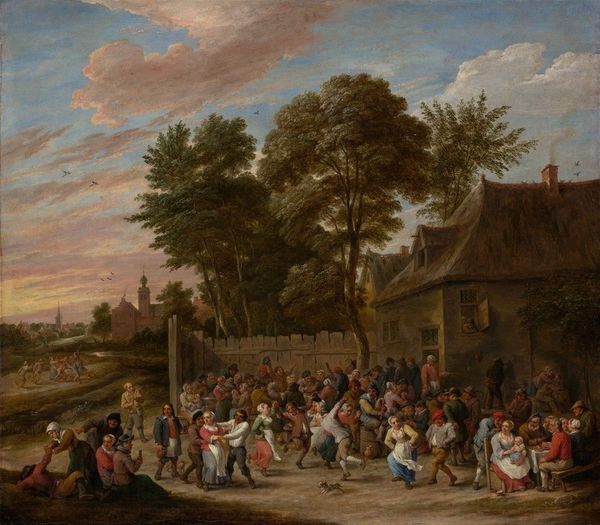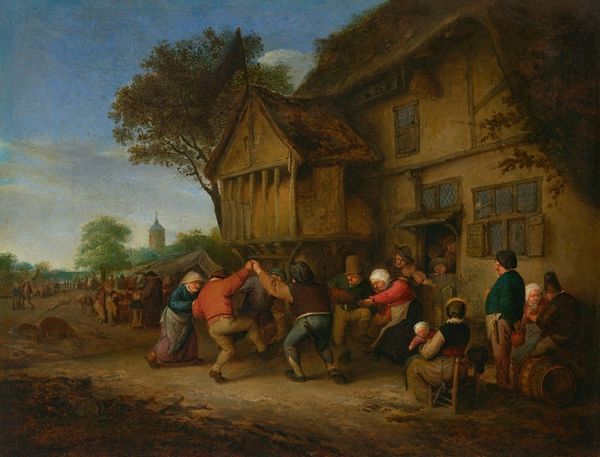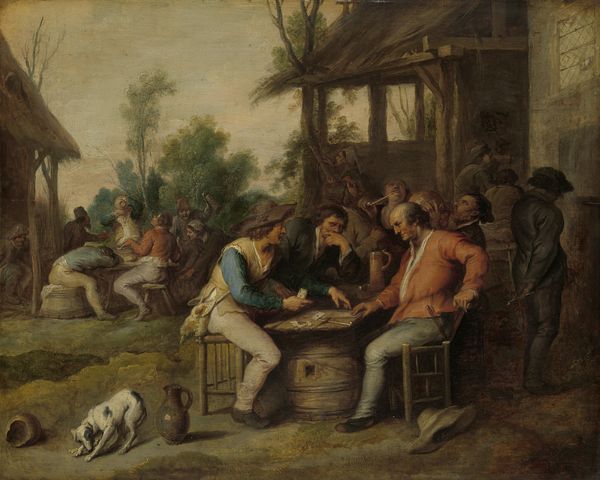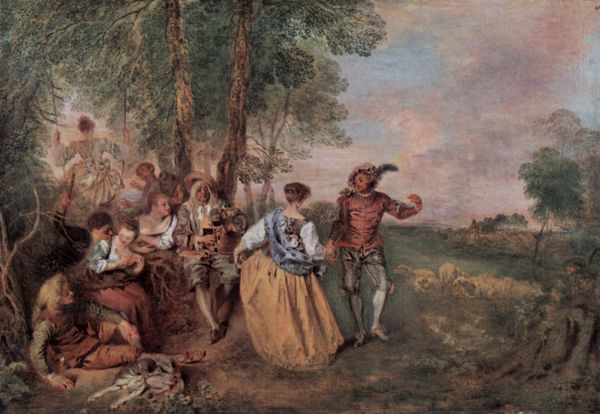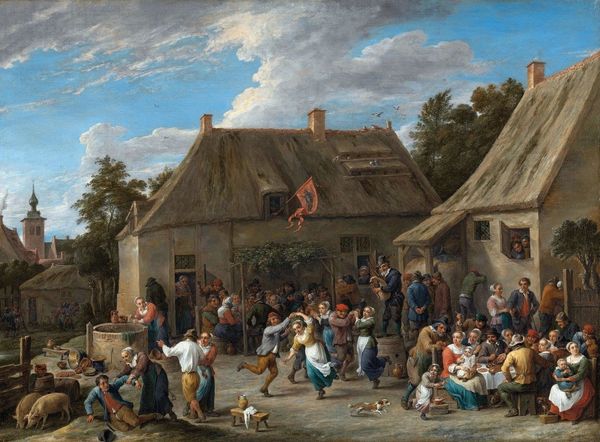
oil-paint
#
baroque
#
dutch-golden-age
#
oil-paint
#
landscape
#
figuration
#
oil painting
#
genre-painting
Copyright: Public Domain: Artvee
Jan Steen created this painting of peasants merrymaking outside an inn in the Netherlands, though the date is not certain. The apparent joy and revelry are deceptive, because paintings like this were usually intended as moral lessons about the dangers of excess and the foolishness of the lower classes. In 17th-century Dutch culture, such imagery carried strong social and political undertones. The Dutch Republic, newly independent, was forging a national identity, and art played a crucial role. Artists like Steen often depicted everyday life, but these scenes were rarely neutral. They reflected prevailing attitudes about social order, class distinctions, and moral behavior, so we might ask what political purposes this representation of the lower class served. To fully understand the painting, we might look at other visual representations from the period, popular literature and theatre, and the records of local institutions. Art history isn't just about aesthetics; it’s about understanding how art reflects and shapes the society that produces it.
Comments
No comments
Be the first to comment and join the conversation on the ultimate creative platform.
